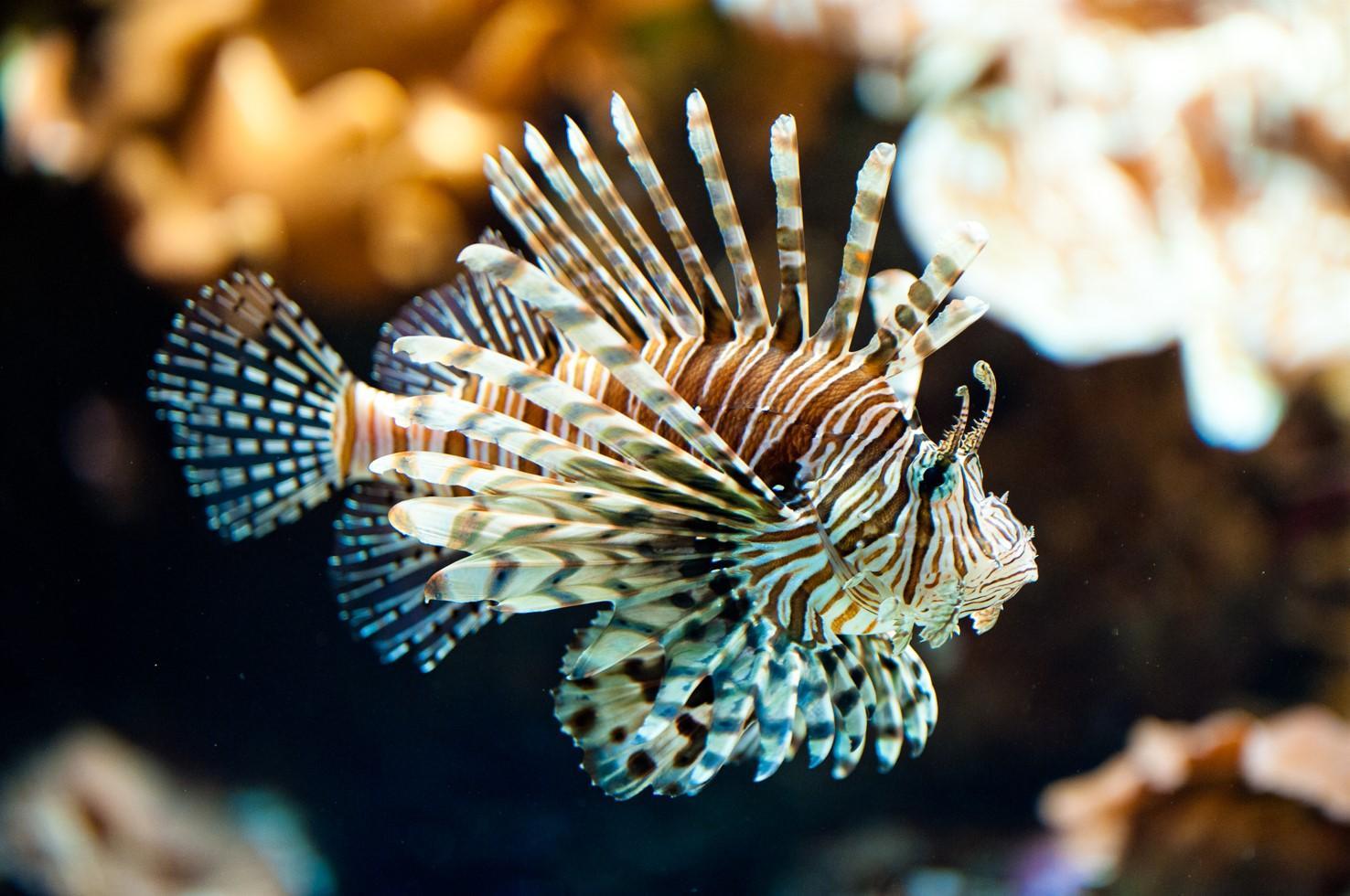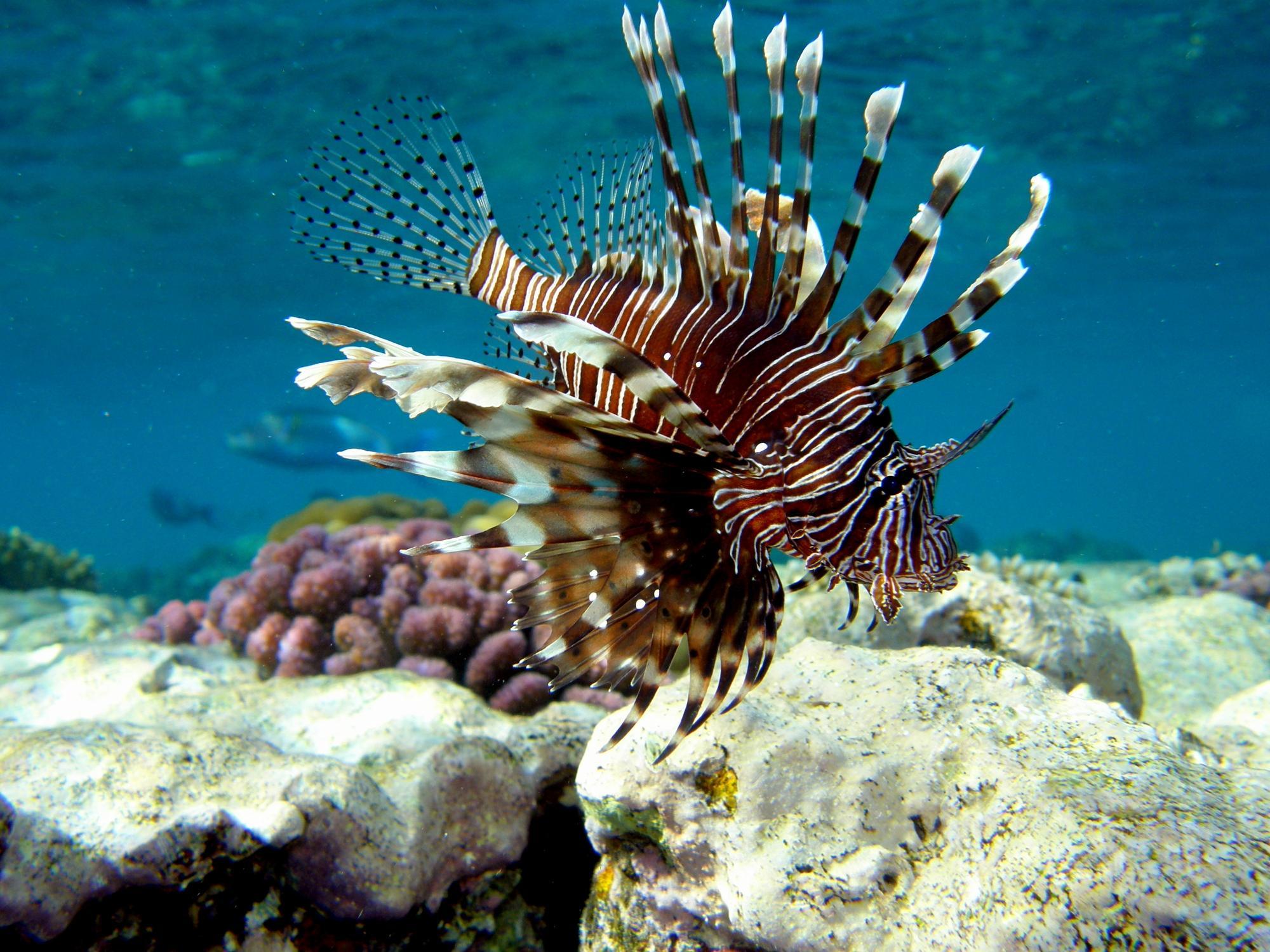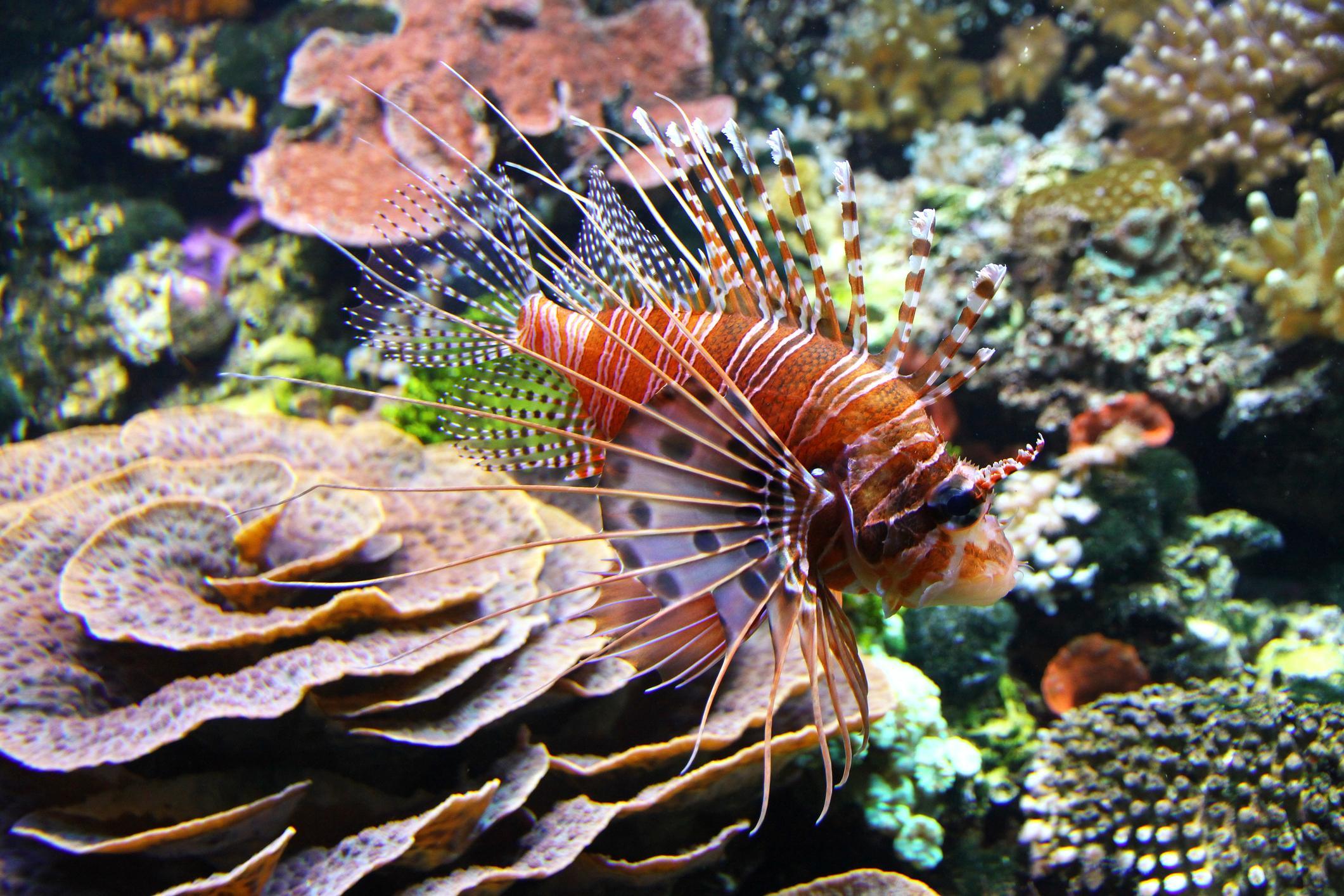Lionfish as Invasive Species


Lionfish are some of the most recognizable fish due to their ornate fin orientation which includes many pointed spines. Although undoubtedly beautiful, they are also one of the most venomous fish in the world and great caution is required if we were to come across one while swimming. Although they have been best known for their unique appearance, lionfish are making a much less welcome claim to fame. They are becoming one of the most aggressively invasive fish species in the world.
At thedailyECO, we learn more about the lionfish. Specifically, we provide information on their characteristics, behavior, diet and habitat, as well as focus on the lionfish as an invasive species.
Characteristics of lionfish
Lionfish are fish that belong to the genus Pterois. Within this genus are 12 recognized species, all of which are characterized by having pectoral and dorsal fins with very long rays. These rays have no tissue between them at the end which is uncommon in fish. The rays are reminiscent of a lion's mane, from which they get their common name. Above their bulging eyes they have a pair of horn-like antennae.
They have aposematic coloration in a conspicuous pattern of brown and white stripes, although these tones change according to species. Aposematism in animals is an evolutionary trait that alerts potential predators of the danger in trying to ear them. This danger is the highly toxic venom which can be fatal to humans in the right circumstances, but is certainly fatal to many types of marine life.
The 12 species of lionfish have variations in their anatomy and habitat. Some of the most common are:
- Red lionfish (Pterois volitans): measures 35 centimeters long and has feathery fins.
- Clear-fin lionfish (Pterois radiata): 25 centimeters long and darker in color than most types of lionfish. It has a pinkish white chin. Its spines are completely white and give an ethereal look.
- Common lionfish (Pterois miles): it is whiter than the previous ones, and with a more rounded head.

Where do lionfish live?
We learn more about the habitat of lionfish:
- Benthic fish: this means their habitat is closely associated with the seabed. They can often be found living among coral reefs, rocks or sea grass.
- Camouflage: they blend in very well with their surroundings due to their brown color pattern, allowing them to often go completely unnoticed by other sea life.
- Distribution: in terms of their geographical distribution, they are located in tropical waters. They are endemic to the Pacific and Indian Oceans, although the specific regions depend on the species.
- Invasive species: the lionfish is an invasive species and has been introduced into the Atlantic Ocean and eastern seas. It is now even possible to see lionfish in the Mediterranean, despite being far from their native waters. Lionfish in Venezuela have also invaded the Caribbean Sea, as well as near Florida, USA. We explain more about why lionfish are invasive species below.
Lionfish diet
Now we know their habitat, we explain more about what lionfish eat:
- In their natural environment they feed on small live fish such as guppies, as well as shrimp and crabs. They are predatory carnivores, but also generalists, meaning they will eat what they can when it is available to them.
- The technique to capture their prey is to let themselves be carried away by the current until they run into a prey and pounce on it. Others may make groups to corral together.
- Very rare cases of cannibalism among lionfish have been recorded.
- They are nocturnal and take advantage of the darkness to get ahead of their prey.

Are lion fish venomous?
Lionfish are highly venomous. They have glands that connect to the outside via the dorsal fin, two rays of the anal fin and two rays of the ventral fin. They are aggressive and territorial, so you should not make contact with them to avoid possible harm.
How venomous are lionfish?
Lionfish only tend to use their venom for defensive purposes. When threatened, they expose their fins with the rayed and poisonous spines to marine predators. The rays first puncture the skin causing pain. Secondly, they inoculate poison that causes fever as well as respiratory and circulatory failure. Most adults will not die from the venom, although they can be in a prolonged period of pain and other symptoms.
When stung by a lionfish, hot water should be applied directly to the affected area. This will help to reduce the pain and the effects of the venom. You will then need to seek professional medical attention to check the wound. Children, older people and those who are allergic to the venom.
Despite not usually being lethal in humans, unnecessary contact with the lionfish should be avoided. Risks and complications such as wound infection or drowning due to the shock underwater can occur.
Why are lionfish an invasive species?
Lionfish tend to follow certain currents, so they will have some migratory behavior. However, this does not explain why they have become an invasive species in places as far away as the Mediterranean and the USA. The main reason why lionfish have become and invasive species is due to the aquarium trade.
Since they are so beautiful, many individuals have wanted to keep them in a home aquarium. Unfortunately, lionfish are not easy to care for and they are venomous. This means they should not be kept by those who do not have experience in exotic fish care. Some potential guardians decided they could no longer care for them and have released them into the water. Others have been introduced by accident.
One of the reasons why lionfish are so good at being invasive species is because they reproduce with a high larval survival rate. This means their young can survive easily and many fish can be introduced in a short space of time. They are also adept at adapting to different aquatic environments, as long as they are tropical.
Finally, another reason why lionfish are so invasive is because of their great ability as a predator. They have been introduced to places foreign to them, but they quickly adapt and take over from other species in the food web. When their populations grow excessively, they alter the ecosystem balance and displace native species.
The lionfish affects the native ecosystem because it preys as much as possible. A single 12-inch lionfish feeds on 10 pounds of fish a year, depleting native species and the role they play in the ecosystem. This creates a knock-on effect, because the species that feed on the fish that are now preyed on by the lionfish are left without food. Most invasive lionfish are of the species P. volitans, known as the red lionfish.

How can we prevent more invasions from lionfish?
Now that lionfish have become an invasive species in many waters, it is important we control their populations. The reason for this is because of the detriment they can cause to various ecosystems. We can now look at some of the ways we can help prevent more invasions from lionfish:
- Education and awareness: too many people only see the beauty of the lionfish and not the responsibility of care. We need to ensure only those able to care for them do so and anyone who cannot should never release them into the sea. Being made aware of the risks can help prevent further lionfish invasions.
- Research: greater sea research can allow for monitoring and protection of waters where lionfish can become invasive. This can allow for early detection which prevents the population booms which make lionfish so invasive.
- Control: once lionfish have been identified in a new area, it is important to quickly implement control and removal measures to prevent them from becoming established. This may include targeted removal efforts by divers or the use of traps and other techniques.
- Regulation and Enforcement: governments can play a crucial role in preventing further invasions by regulating the importation and sale of lionfish, enforcing existing regulations, and promoting responsible fishing practices.
Can you eat lionfish?
The answer is yes. This practice helps to control excessive populations. For fishing to have this conservationist aspect, small fish must be removed to prevent them from reaching the reproductive stage. However, it must be done in places where they are an invasive species and with a global balance so as not to take the species to the other extreme of conservation and put it at risk.
Great care must be taken when fishing lionfish. Only professionals who know how to deal with those venomous spines should try to fish invasive lionfish.
Learn about another fish with potentially deadly toxins in our related article on dolphins getting high with puffer fish.
If you want to read similar articles to Lionfish as Invasive Species, we recommend you visit our Wild animals category.
- Sandford, G. (1994) The Complete Book of Aquarium Fish: Complete Guide to Identifying, Choosing and Maintaining Freshwater and Marine Species. Madrid: Tursen/Hermann Blume Editions.
- Campos, N. & Acero, A. (2019) Marine sciences. San Andrés: National University of Colombia.
- Sánchez, J. (2021) Why do we depend on biodiversity? Bogota: University of the Andes.








